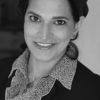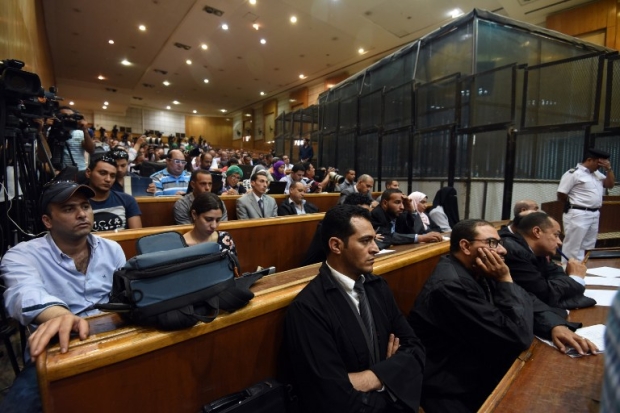How to create an Islamic government – not an Islamic state

Starting with Pakistan in 1947, several countries in the modern world have identified themselves as “Islamic states”. A deformed mutation of this claim comes from the Islamic State (IS) group, with its terrorising Mongol-like mission and monopolising insistence that they are the Islamic state.
What about Islamic states like Pakistan and Iran? Are they following an established model for Islamic government? Not really
But IS has been rejected by the overwhelming majority of the world’s Muslims, for (among other things) their blatant disregard of established Islamic rules of warfare, and their violent treatment of anyone who disagrees with them. If you’re trying to understand the principles of Islamic government, you can and should dismiss IS.
But what about Islamic states like Pakistan and Iran? Are they following an established model for Islamic government? Not really. They’re following a colonial European model, with a few Muslim add-ons.
Historically, European forces dismantled the pre-existing legal and political systems in Muslim-majority lands and replaced them with legal codes and judicial systems based on a European nation-state.
This transformation has created a fundamental problem for anyone interested in understanding Islamic government.
Siyasa, fiqh
The European nation-state is based on the idea of legal monism where all law comes from the state. But pre-colonial Muslim legal systems were based on legal pluralism, which allocates space for both state and non-state law.
More specifically, Muslim systems were made up of two types of law: (1) siyasa made by the rulers and (2) fiqh articulated by religious scholars. Together, fiqh and siyasa make up a sharia-based rule of law. Operating interdependently, fiqh and siyasa serve different roles in such a legal order.
Without a clear distinction between what is siyasa and what is fiqh, many Muslim-majority countries have created near-theocratic rule
Fiqh sets out rules and guidelines for living a good Muslim life, based on interpretations of Muslim scripture (the Quran and the life of the Prophet Muhammad) by religious legal scholars. There are multiple schools of fiqh, because there are multiple fiqh scholars, known as fuqaha. The fuqaha openly acknowledged the fallible nature of their work - that no human can claim with certainty to have understood God’s message correctly.
So, while there may be one sharia of God, there are multiple fiqh versions of sharia from which Muslims can choose.
For example, a married couple following the Hanafi school would get a different answer about their legal grounds for divorce than a couple who went to a Maliki legal scholar. No Muslim institution (let alone a “church”) can dictate which school either couple should follow.
Even more significant is this: the answer from the Maliki or Hanafi legal scholar (called a fatwa) is not binding in itself. Each couple could go to a different scholar for a different fatwa, if they so choose. And this is done entirely in the private realm. The only time a fiqh rule is imposed by the state is when the parties cannot resolve their conflict with just a fatwa, and they seek out state-enforced resolution of their fiqh question before a qadi (judge) of their chosen fiqh school in a court created by the ruler.
Siyasa is a very different animal. It is not about directing Muslim lives. Rather, siyasa laws are created by the rulers of a society in order to organise that society efficiently and safely. According to classical Islamic scholarship and most of Muslim history, a Muslim ruler’s job is to serve the public good (maslaha amma).
Siyasa laws thus included things like taxes, marketplace regulation and public safety – laws that are important for public order, but don’t come directly from scripture. Rulers set up their own siyasa tribunals (the shurta, hisba, and mazalim courts are some examples) to adjudicate conflicts arising from their siyasa rules.
Separation of powers
The separation of siyasa and fiqh protected Muslim societies from theocracy because it separated the rulers from the fuqaha. Knowing that fiqh and siyasa played different roles in their legal systems, most Muslim rulers worked with the reality of these two separate legal realms (and the diversity within the fiqh realm), rather than using their political power to enact and enforce one singular version of fiqh on everyone.
A key to modern Islamic constitutionalism is realising that state action for the public good is itself a sharia-mindful thing to do
Thus, in these societies, each individual (including non-Muslims) had the freedom to choose to follow their preferred religious school about, for example, proper inheritance distribution, or marital rights, or legitimate business transactions. But everyone – regardless of religious affiliation – had to follow the same siyasa rules about the maximum price of wheat, or the treatment of labourers, or (to take some modern examples) the environmental codes and traffic laws. It is in the public good, after all, we all drive on the same side of the road and can breathe clean air.
Sharia rule of law systems made up of both fiqh and siyasa allowed these two complementary but separate kinds of law to coexist – and the societies where this system prevailed were able to thrive. In varying particulars, this was the constitutional setup in virtually every Muslim system until modern times – from the Abbassids ruling from Baghdad, the Fatimids from Cairo, Andalusian rulers throughout southern Spain, the Safavids from Isfahan, the Moghuls from Delhi, and the Ottomans sitting in Istanbul.
READ: Sharia law will play a greater role in Syria's future
But today’s Muslim governments show little trace of this historic separation of fiqh and siyasa. Even Islamists seem to have forgotten it. This is why we see “sharia legislation” projects today, such as the enactment of the Pakistan’s Hudood Ordinance, aggressive retention of polygamy in Egypt’s family law code, and provisions that sharia shall be a (or sometimes “the”) source of legislation in the constitutions of Egypt, Iraq, Kuwait, Sudan, Yemen, Syria and Afghanistan.
'One law for all'
In all these efforts to “Islamise” their states, Muslim political movements have never challenged the idea of a nation state, but instead have just tried to make that nation state “Islamic”.
That is, instead of looking to Muslim history for alternative constitutional models, Islamists just reinforce the legal monist concept that state power is what gives law its authority, and then push state lawmaking bodies to be the official voice of sharia – usually in the form of legislating bits and pieces of fiqh rules.
Not surprisingly, this brings them into battle with secular forces seeking control over the same legislative space. Legal monism forces everyone to fight to control what will be the “one law for all”. There is no other option in such a system. When that “one law” includes religious rules (fiqh), the potential for theocratic oppression is high.
What everyone seems to miss is that, rather than restoring sharia to their societies, these legislative efforts have altered sharia by pouring it into a monistic nation-state model of government. Without a clear distinction between what is siyasa and what is fiqh, many Muslim-majority countries have created near-theocratic rule, where the government declares the sharia law of the land. For a religion that has never had a “church”, this is a dangerous and ill-fitting change.
Structural reform
What is the solution? Contrary to what many argue, it’s not a “Muslim reformation". And a move to secularism is not the only way to stop theocracy.
We don’t need legal reform, we need structural reform: deep and creative thinking about what Islamic constitutionalism is
Another way is to renew the bifurcation of the two legal realms of fiqh and siyasa as seen in pre-modern Muslim legal systems. Not only would this disentangle the state from religious law, but it is also more authentic to Muslim heritage than the colonial nation-state model that now dominates.
In short, we don’t need legal reform, we need structural reform: deep and creative thinking about what Islamic constitutionalism is.
As a scholar of comparative constitutional theory, I look for themes and recurring principles across systems. When I look at Muslim legal and political systems over the centuries of time and space, I see three themes: (1) a separation between state lawmaking (siyasa) and non-state lawmaking (fiqh); (2) a legitimation of state lawmaking based upon service of the public good; and (3) siyasa respect for the five general purposes of sharia (protection of religion, life, intellect, family and property).
READ: Islam needs a restoration, not a reformation
These three themes, updated for modern sensibilities, should form the core elements of modern Islamic constitutional theory today. This formulation of Islamic constitutionalism starts with sharia as a holistic rule of law, rather than a collection of (fiqh) rules. Because state lawmaking based on the public good is itself part of a sharia rule of law system, this gives the average Muslim a sharia-mindful alternative to the misplaced desire for “sharia legislation".
To the Muslims who support sharia as the law of the land, the message is this: a government is serving sharia even when all it is doing is lawmaking based upon the public good. In other words, a key to modern Islamic constitutionalism is realising that state action for the public good is itself a sharia-mindful thing to do.
Serving the common good
This is a different model than that of today’s so-called “Islamic states” where legislation of fiqh is thought to be the way to make the state Islamic. Instead, service of the public good is the first Islamic responsibility of a Muslim government.
In this way, Muslims can have sharia as the law of the land without imposing uniform religious rules upon an entire population. This re-positions what is commonly expected of Islamic governments. Taking the classical concept of siyasa seriously means that lawmaking by governments of Muslim-majority countries serves sharia if - and only if - it seeks to serve the public good.
These avenues have been missed so far because Eurocentric concepts of law and government currently dominate the field
Given that most of the world’s Muslims apparently want sharia to be the law of the land, this concept of Islamic constitutionalism means they can give up the fight with secular forces to enforce a uniform set of fiqh rules on everyone. Instead, they can work together with them to create mutually beneficial laws that serve the common good.
Public discourse in such a system would change from debates over sharia doctrine to debates over what is in the public’s best interest. And everyone – religious, secular, agnostic – is equally qualified to participate in that conversation.
How to decide what is in the public good? Democratically, of course. In centuries past, Muslim rulers unilaterally claimed the authority to know what served the public good, but now that democratic lawmaking has widespread support around the world (including with Muslims), modern Islamic constitutionalism should use democratic institutions in the siyasa/state realm to determine the public good, and then legislate to achieve it.
In such a system, citizens would vote on, for example, tax laws, market regulation, health care, and policing, knowing that these are Islamic obligations of the state, that it can and should be accomplished without direct reference to scripture.
Citizens would vote on, for example, tax laws, market regulation, health care, and policing, knowing that these are Islamic obligations of the state
This offers new solutions to conflicts between secular and religious forces in Muslim-majority countries today, such as the purported incompatibility of Islam and democracy and apparent conflicts between sharia and human rights.
Rather than accepting the current constitutional norm that locates all legal authority in a central sovereign power – and then debating whether that power should or should not be used to enforce sharia (and if so, which version) – this vision of Islamic constitutionalism opens new avenues for Islamic – but not theocratic – governments.
Sadly, these avenues have been missed so far because Eurocentric concepts of law and government currently dominate the field. Once we see past this dominance, we can see that there is such a thing as Islamic constitutionalism that is not secular and not theocratic – and, importantly, not impossible.
- Asifa Quraishi-Landes is an associate professor of law at the University of Wisconsin Law School, specialising in comparative Islamic and US constitutional law, with a current focus on modern Islamic constitutional theory. She is a 2009 Carnegie Scholar and 2012 Guggenheim Fellow. Currently, she is working on "A New Theory of Islamic Constitutionalism: Not Secular. Not Theocratic. Not Impossible", a project which seeks to articulate a new constitutional framework for Muslim majority countries that will answer both the Muslim impulse for a sharia-based government, as well as secular concerns that a non-theocratic system is important in order to respect human and civil rights. This article is drawn from research presented as part of the Aga Khan University Institute for the Study of Muslim Civilisations’ Governance Programme.
The views expressed in this article belong to the author and do not necessarily reflect the editorial policy of Middle East Eye.
Photo: Teading the Koran in between two prayer times in Syria's Umayyad Mosque (Wikicommons)
This article is available in French on Middle East Eye French edition.
Middle East Eye propose une couverture et une analyse indépendantes et incomparables du Moyen-Orient, de l’Afrique du Nord et d’autres régions du monde. Pour en savoir plus sur la reprise de ce contenu et les frais qui s’appliquent, veuillez remplir ce formulaire [en anglais]. Pour en savoir plus sur MEE, cliquez ici [en anglais].






